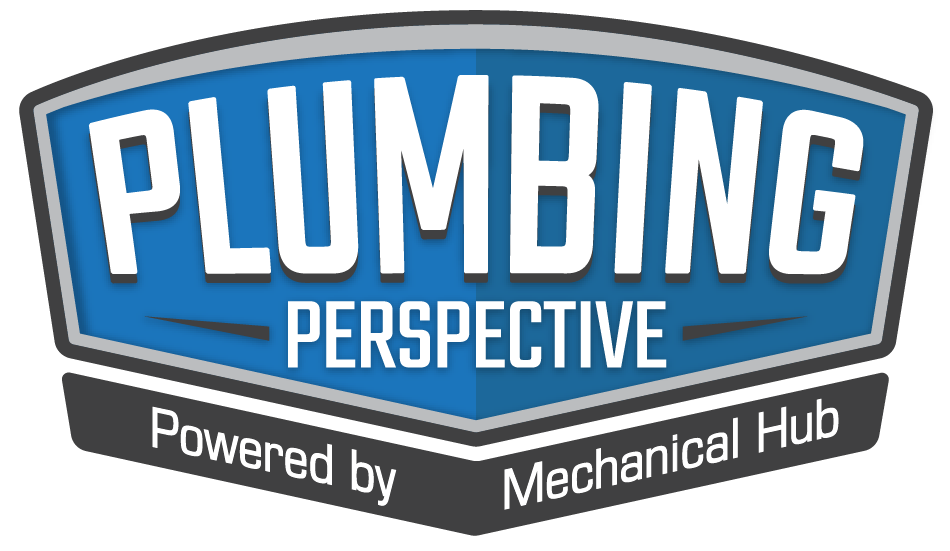Serving a congregation of 150 faithful, Oneonta, N.Y., Assembly of God Church has increased its flock significantly since its founding in 1939. In the past 20 years alone, the number of churchgoers has more than tripled. Congregation growth has necessitated corresponding facility growth throughout the years. The current sanctuary was built in 1995, replacing an Read more
Whats New
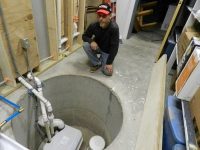
Serving a congregation of 150 faithful, Oneonta, N.Y., Assembly of God Church has increased its flock significantly since its founding in 1939. In the past 20 years alone, the number of churchgoers has more than tripled.
Congregation growth has necessitated corresponding facility growth throughout the years. The current sanctuary was built in 1995, replacing an older chapel that had been converted from a three-car garage. Even this larger building, however, could not keep up with the rise in attendees and demand for community programs. “By 2012, with 150 people and a growing children’s program, the church needed to expand,” says Reverend John Grenier, Pastor of Oneonta Church.

The decision was made to undertake a two-story, 50- by 100-foot expansion that would contain three classrooms, boys’ and girls’ restrooms and a gymnasium. Chief among the challenges was figuring out how to run plumbing from the new facility all the way to the septic system on the other side of the original building.
An initial solution, proposed by the project’s original general contractor and architect, called for running a sewer line from the building expansion to the septic tank near the original structure—a distance of roughly 150 feet. “We would have had to run pipe in the ground the full length of the old church (100 feet) and across the side of the expansion (50 feet),” explains Rev. Grenier.

Concerned with the significant time and material costs involved with such an undertaking, Rev. Grenier was hoping for a more cost-effective and less-laborious solution. “Not only would we have had to dig up the ground, including sidewalks and driveways, by running all that pipe, but we would also have to worry about freezing pipes during the winter, not to mention replanting grass and other greenery.”
A Simpler Approach
When churchgoer and licensed plumber John Stewart heard the proposed solution, he immediately suggested a different approach. “I thought it made absolutely no sense to endure all the labor and cost of installing that much pipe when you could just use a macerating system,” he recalls.
Stewart instead recommended installing a grinding system from Saniflo. Designed for both commercial and residential applications, these systems macerate (or grind) waste into a slurry before pumping it horizontally or vertically to a building’s drain line. “I’ve been using this technology for 10 years, and it hasn’t disappointed me yet,” affirms Stewart. “It’s well-built and designed to handle more than you would think possible.”

In the case of Oneonta Church, a pump would be connected to all the plumbing fixtures in the building expansion and housed in a pit. Effluent would be pumped up 13 feet and across the ceiling and link up with a stink pipe in the old building before eventually working its way to the septic tank on the other side of the property. The proposal promised to save a significant amount of time, labor and money on the project overall.
Despite the promise of savings, the architect on the project had some initial concerns. “He wasn’t used to the technology and was worried about leaks and bursts,” recalls Rev. Grenier. Stewart’s confidence in the grinding system was so strong, however, that he managed to eventually sway the architect to support the idea. “As I kept emphasizing how much less labor and cost the grinding system would require, the first option of digging up the ground became virtually indefensible,” insists Stewart.
All that remained was to choose the pump that would best accommodate the church expansion’s plumbing needs—which were many. Discharge from six toilets, seven sinks, two floor drains and two urinals needed to be pumped up and out. “With the potential for a high volume of effluent in a short amount of time, I wanted a pump with built-in redundancy that could handle anything flushed its way,” explains Stewart.
He discovered just the product during a conversation with Bill Norris, a Saniflo sales representative working for Empire State Associates in Rochester. Norris recommended the Sanicubic 2 because it comes equipped with two grinder pumps. Both are engineered to operate alternately. They each take turns handling the wastewater so that neither is more heavily used over time than the other. A single pump is able to handle up to 50 gpm. If the incoming rate is higher than the discharge rate, the pump automatically signals the “overload” stage. This will activate the second pump and both will operate simultaneously until the condition is alleviated. When both pumps are in operation, the discharge rate increases to roughly 90 gpm.
“The last thing I want is to be pulled from my church pew because we have a plumbing problem in the middle of service,” laughs Stewart. “This unit’s built-in redundancy reassures me that demand will be met.”
Stewart was further impressed by the unit’s heavy-duty grinding power. “I watched Bill flush a packaged tampon down a toilet connected to the system and…poof…it was ground to bits,” recalls Stewart. The unit also comes with an external alarm box that gives the owner status alerts.
Miraculous Savings
Under Stewart’s direction, church volunteers installed the plumbing system over the course of three weeks. “If we had installed the plumbing uninterrupted, it would have taken roughly six hours,” explains Rev. Grenier. “Our volunteers have busy lives, so they had to break up the work.” The pump was installed inside a five- by-five foot pit, with all plumbing and venting running up and through the ceiling.
Reported complications were minimal and mostly involved running the pipe. “Since we had a team of volunteers doing the pipe runs, I often stepped in, as the certified plumber, to reassure them that they were doing it properly,” says Stewart. “We also had a few hiccups in determining which pipe angles to use coming out of the pit and into the ceiling, but we resolved those fairly quickly, and it was an easy installation overall.”
Even better for Oneonta, by opting for the grinding system installation, the church garnered substantial savings. Choosing the first option of running a sewer line through the ground would have involved expensive digging and material costs totaling nearly $40,000. “Thanks to the great cost-effectiveness of the grinding system plumbing solution and our wonderful parish volunteers who donated their time and effort, we saved roughly $30,000 on the project,” reports Rev. Grenier.
After the installation, Stewart tested the pump with all the fixtures. “Even with everything running at full speed, only one of the two grinder pumps needed to come on, meaning the unit can handle even more in the future,” says Stewart. “The high level of engineering and ingenuity put into this technology is astounding,” he continues. “All the money it saved Oneonta Church can now be used to foster our faith community and improve our children’s programs—that is, ultimately, the real victory for us.”
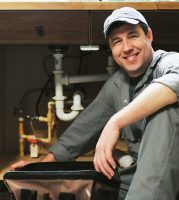
Piscataway, N.J. ― Are you a plumbing expert who likes to share your know-how and help improve your customers’ lives? You may be just the plumber we’re seeking. Well-known plumbing manufacturer American Standard has launched its Plumber Know How contest, aimed at identifying the newest plumbing expert to engage customers and share professional advice through Read more
Piscataway, N.J. ― Are you a plumbing expert who likes to share your know-how and help improve your customers’ lives? You may be just the plumber we’re seeking.
 Well-known plumbing manufacturer American Standard has launched its Plumber Know How contest, aimed at identifying the newest plumbing expert to engage customers and share professional advice through the Company’s website, social media communities, and at special events throughout the year.
Well-known plumbing manufacturer American Standard has launched its Plumber Know How contest, aimed at identifying the newest plumbing expert to engage customers and share professional advice through the Company’s website, social media communities, and at special events throughout the year.
The selected plumber-expert will receive $5,000 cash, $5,000 in product allowance, and extensive exposure via social engagement, online notoriety, and in-person contact with industry personnel. The plumber will participate in the program for up to 12 months, and will have the opportunity to be personally involved with the creation of promotional and instructional content for homeowners nationwide.
Interested plumbers can enter the contest by submitting a brief video filmed casually on a mobile phone or similar hand-held device. The video should be one-to-two minutes long and demonstrate the entrant’s personality, offer a piece of helpful plumbing advice that every homeowner should know, and express what the entrant likes about American Standard. This informal video can be uploaded at www.plumberknowhow.com now through December 15, 2016.
The contest winner will be a consummate trade pro who sets the standard for plumbers nationwide. This plumbing contractor can share his/her practical experience and advice that will improve day-to-day life for customers. The ideal individual will have the right answers to homeowners’ plumbing questions, from fixing simple leaks to saving water and beyond.
Additional activities for the Plumber Know How winner may include live product demonstrations at the Kitchen & Bath Industry Show (KBIS), video productions at showrooms, and live social media events. The winning plumber’s social media channels will be promoted via the extensive American Standard online communities, to assist in exponentially publicizing their contracting business.
For more information on the Plumber Know How contest or to enter, visit www.plumberknowhow.com.

Washington, DC — The U.S. Environmental Protection Agency is honoring 20 businesses, municipalities, utilities, and organizations for their commitment to protecting the environment through water efficiency. EPA’s WaterSense partners have helped Americans save more than 1.5 trillion gallons of water and $32.6 billion in water and energy bills since the program began in 2006. “Over Read more
 Washington, DC — The U.S. Environmental Protection Agency is honoring 20 businesses, municipalities, utilities, and organizations for their commitment to protecting the environment through water efficiency. EPA’s WaterSense partners have helped Americans save more than 1.5 trillion gallons of water and $32.6 billion in water and energy bills since the program began in 2006.
Washington, DC — The U.S. Environmental Protection Agency is honoring 20 businesses, municipalities, utilities, and organizations for their commitment to protecting the environment through water efficiency. EPA’s WaterSense partners have helped Americans save more than 1.5 trillion gallons of water and $32.6 billion in water and energy bills since the program began in 2006.
“Over the past decade, EPA’s WaterSense partners have made WaterSense more than just a label. It’s become a way of life,” said EPA Administrator Gina McCarthy. “Our changing climate impacts water quality and supplies. And we need to ensure that more Americans are saving water now so that we can protect this precious resource for future generations.”
The winners were chosen from nearly 1,700 WaterSense partners, including utilities, local governments, manufacturers, retailers, distributors, builders, and other organizations who have partnered with EPA to produce and promote water-efficient products, programs, and homes.
2016 Sustained Excellence Award Winners
Delta Faucet Company (Indiana), a two-time Sustained Excellence winner, spread the word about the performance of WaterSense labeled showerheads by featuring them at outdoor showering stations that helped clean more than 34,000 muddy runners at Warrior Dash races across the country as part of its HappiMess campaign. The company’s Brizo brand donated WaterSense labeled products to more than 30 homes as part of a charity giveaway supporting pediatric cancer research.
Kohler Co. (Wisconsin) earned its fourth Sustained Excellence Award by, in part, cosponsoring the Change the Course campaign to encourage consumers to pledge to reduce water use. Additionally, Kohler’s mobile showering stations with WaterSense labeled showerheads, toilets, and faucets reached more than 2,000 San Francisco residents in need, while 100,000 Bonnaroo music festival attendees in Tennessee used similar showering stations.
The Home Depot (Georgia) is a two-time Sustained Excellence winner; all the toilets and bathroom faucets sold in its stores are WaterSense labeled. The company worked last year to ensure that all the showerheads it sells in its stores were WaterSense labeled by September 2016. To drive sales of WaterSense labeled products, the company promoted rebates and more than $43.8 million in product incentives in 2015.
KB Home (California), which received its second consecutive Sustained Excellence Award, constructed 233 WaterSense labeled homes in 2015, an increase of 142 percent compared to its labeled homes constructed in 2014. The company introduced four KB Home communities in California in which all homes will be built to meet the WaterSense specification.
2016 Partners of the Year
Promotional Partner of the Year: Athens-Clarke County (Georgia) Public Utilities Department’s Water Conservation Office expanded its Certified Blue restaurant program to include 33 new local businesses and distributed “We’re for Water” activity sheets for kids to complete while waiting for meals. Its Little Lily Pad Hop school outreach project taught students how to conserve water, and its sixth annual Athens Water Festival included a scavenger hunt for the WaterSense logo.
Promotional Partner of the Year: Citrus County (Florida) Utilities’ We’re for Water Classroom Challenge taught 400 third through fifth grade students how to find and fix leaks and save water at home. The utility also celebrated Fix a Leak Week with three adult activities: Schedule a Specialist, Facilities Checkup, and a Water Conservation Expo.
Promotional Partner of the Year: The City of Charlottesville (Virginia) promoted WaterSense labeled products during its Love Your Landscape contest during Sprinkler Spruce-Up 2015. For Fix a Leak Week, the city provided off-campus University of Virginia students with leak-detection tablets and held its annual five-kilometer race. A Blue Team of middle and high school students distributed 600 water conservation kits to utility customers.
Promotional Partner of the Year: Cobb County (Georgia) Water System, a five-time Partner of the Year Award winner, and its new mascot Tappy the Turtle promoted all WaterSense campaigns in 2015. For Fix a Leak Week, the utility supported the Water Drop Dash 5k and Water Festival, and for Sprinkler Spruce-Up it sponsored an “Ask an Expert” traveling display.
Promotional Partner of the Year: Metropolitan North Georgia Water Planning District launched the Great Plumbing Fixture Giveaway, where a local nonprofit selected through social media earned $1,000 in free WaterSense labeled fixtures. The district sponsored its annual Water Drop Dash 5k and Water Festival for Fix a Leak Week 2015 with more than 500 runners and provided WaterSense activity sheets for kids.
Licensed Certification Provider Partner of the Year: Energy Inspectors Corporation (Nevada) certified 233 homes for KB Home to meet the WaterSense labeled homes specification, more than double the number of homes it certified in 2014. As of the end of 2015, the company has trained a dozen inspectors to perform WaterSense specification inspections.
Professional Certifying Organization Partner of the Year: The Sonoma-Marin (California) Saving Water Partnership continued to expand the reach of its WaterSense labeled Qualified Water Efficient Landscape (QWEL) certification program. In 2015, the partnership worked with six new organizations to adopt the QWEL program and helped more than 65 irrigation professionals earn certification.
Nine additional WaterSense partners received Excellence Awards to recognize their support for a specific aspect of the program in 2015:
• Cascade Water Alliance (Washington) and High Sierra Showerheads (California) for Excellence in Strategic Collaboration
• City of Durham (North Carolina) Water Management and Sonoma-Marin (California) Saving Water Partnership for Excellence in Promoting WaterSense Labeled Products.
• City of Carmel (Indiana) Utilities, City of Fort Worth (Texas), Regional Water Authority (Sacramento, California), and the Toro Company (Minnesota) for Excellence in Education and Outreach.
• American Standard (New Jersey) for Excellence in Innovation and Research.
Since 2006, EPA’s WaterSense program has worked to protect the future of the nation’s water supply by offering Americans a simple way to use less water with water-efficient products, new homes, and services. WaterSense labeled products, which are independently certified to use at least 20 percent less water and perform as well or better than standard models, have been on the market since 2007, when toilets first earned the label. Since then, the number of labeled models has grown to more than 16,000, including products used in residential and commercial bathrooms, commercial kitchens, and outdoor irrigation. EPA’s WaterSense program certifies homes with WaterSense labeled fixtures and features. To date more than 700 homes have earned the WaterSense label.
Learn more about the 2016 WaterSense Award winners at www.epa.gov/watersense.
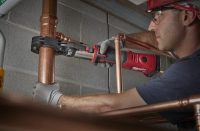
Through a ground-up re-design, the new Milwaukee Tool brushless M18™ FORCE LOGIC™ Press Tool is now smaller and lighter than ever before. 20% lighter than the leading competitor, and more compact than its predecessor, the Press Tool is best in class – offering 20% more run-time, 10% faster cycle time, and the industry’s longest calibration Read more
Through a ground-up re-design, the new Milwaukee Tool brushless M18™ FORCE LOGIC™ Press Tool is now smaller and lighter than ever before. 20% lighter than the leading competitor, and more compact than its predecessor, the Press Tool is best in class – offering 20% more run-time, 10% faster cycle time, and the industry’s longest calibration interval at 50,000 cycles.

“FORCE LOGIC™* is all about revolutionizing traditional processes so our users can be significantly more productive and profitable. When we introduced the first FORCE LOGIC™ Press Tool solutions a few short years ago, we achieved that for plumbers and mechanical contractors,” said Alex Boll, Product Manager for Milwaukee Tool.
 “With the introduction of the new M18™ FORCE LOGIC™ Press Tool we’ve reset the standard for productivity. State of the art brushless motor technology enables the tool to run faster each cycle, run more cycles on each battery, and run longer before calibration. And it’s able to accomplish all of this while being the lightest and smallest in the industry, allowing the users to get the job done where other press tools can’t.”
“With the introduction of the new M18™ FORCE LOGIC™ Press Tool we’ve reset the standard for productivity. State of the art brushless motor technology enables the tool to run faster each cycle, run more cycles on each battery, and run longer before calibration. And it’s able to accomplish all of this while being the lightest and smallest in the industry, allowing the users to get the job done where other press tools can’t.”
The most intelligent full-sized press tool on the market, the new M18™ FORCE LOGIC™ Press Tool delivers piece of mind, even on the most critical jobs. A pre-press battery check prevents the user from starting a press the tool cannot complete, while Auto-Cycle ensures a full press every time and indicates to the user via a green light that the connection is complete.
 The M18 FORCE LOGIC™ Press tool and compatible jaws are designed to work with all major fitting manufacturers, currently compatible with 13 unique systems and continuing to expand. Powered by Milwaukee REDLITHIUM™ batteries, the new M18™ FORCE LOGIC™ Press Tool is fully compatible with the entire M18™ line, now offering more than 100 power tool products.
The M18 FORCE LOGIC™ Press tool and compatible jaws are designed to work with all major fitting manufacturers, currently compatible with 13 unique systems and continuing to expand. Powered by Milwaukee REDLITHIUM™ batteries, the new M18™ FORCE LOGIC™ Press Tool is fully compatible with the entire M18™ line, now offering more than 100 power tool products.
* FORCE LOGIC™ is engineered to not only improve upon, but fundamentally change the way high-force tools are used in the field. Through thoughtful design focused on workflow, each tool simplifies a complicated process to deliver the best user experience of its kind and the smartest way to work.
Specifications
M18™ FORCE LOGIC™ Press Tool (2773-22)
Force: 7,200lbs
Pipe Capacity: ½” – 4” (Varies by material)
Approx. Cycle Time: 3.7 Seconds
Length: 14.1”
Weight: 6.5 lbs
Jaw Warranty: 2 Year
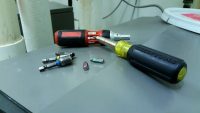
On a daily basis there are a handful of items that we as technicians use to make our jobs just a bit easier. Generally, they are a not much more than an everyday 6-in-1 screwdriver. Ask around as to whether or not there is a preference to which multi-bit screwdriver is the best, I’m sure Read more
On a daily basis there are a handful of items that we as technicians use to make our jobs just a bit easier. Generally, they are a not much more than an everyday 6-in-1 screwdriver. Ask around as to whether or not there is a preference to which multi-bit screwdriver is the best, I’m sure you’ll get more opinions than you bargained for.
Surprisingly, a device which could be labeled as a simple tool, can be a very complex device in the same package. Models varying in features from LED lights to retractable magnets to ratcheting handles with on board storage, with costs ranging from $15 to nearly $100 for a high end models. In the last 20 years my tool box has carried it’s fair share of individual blades and multi-bit super drivers. Here are a couple notable models:
One of my favorites over the years has been the Klein 10 in 1 model 32505. It has a compact length at 7-3/4” and featured the most commonly used bits and drivers needed for daily plumbing/HVAC service needs. When this driver is brand new, it is probably one of the most comfortable in my hand. That said, it is not my daily go to for a couple of reasons. The bit holder/bushing that the bits fit into become worn when used as intended. After frequent nut driver use the bits will become loose and most likely lost, turning a great tool into a door stop. All in all this model has been popular and works well.

Recently, I have been carrying a Milwaukee 48-22-2302 ratcheting multi-driver. I like the stowed length at 6”, as it fits comfortably in a pocket without having a protruding bit to tear holes in the truck seat. The ratcheting feature is nice, but could use a bit of work to prevent the direction from being changed during use. The 3-1/2” long bits along the user to reach recessed fasteners easily. One of the features I most like is the magnetic bit retainer. I use this with the common 1/4”, 5/16” and 3/8” power nut driver bits, which I find are in my pockets anyway along with a t-20 and t-25. The combination seems to really work well.
One of the issues I have had with this model is the bits are retained in the handle with an O-ring to provide a friction fit. With use this o-ring becomes dry and dirty making removing the bits difficult. Any self-respecting plumber or HVAC tech should have a few drops oil or stem grease on the truck, lightly wipe the bits and you’re back in the game!
Lesson to take away today is: Even though what you have seems to be working, don’t be afraid to give the new model a whirl, besides the manufacturers have spent a pile trying to make it better anyway!
Good luck and may the Profits Be With You!
 Andy Mickelson is owner of Mickelson Plumbing & Heating, Missoula, Mont. Andy has built a solid foundation for his business through hard work and perseverance. His performance on high profile jobs in the Missoula, Montana area have placed him at the top of the list for area customers seeking a knowledgeable contractor in the plumbing, hydronic and HVAC field. Andy has served as a United Association Instructor at the Missoula Joint Apprentice Training Center for the Local 459. His passion for industry education, advancement and professionalism make him a well-respected local businessman.
Andy Mickelson is owner of Mickelson Plumbing & Heating, Missoula, Mont. Andy has built a solid foundation for his business through hard work and perseverance. His performance on high profile jobs in the Missoula, Montana area have placed him at the top of the list for area customers seeking a knowledgeable contractor in the plumbing, hydronic and HVAC field. Andy has served as a United Association Instructor at the Missoula Joint Apprentice Training Center for the Local 459. His passion for industry education, advancement and professionalism make him a well-respected local businessman.
